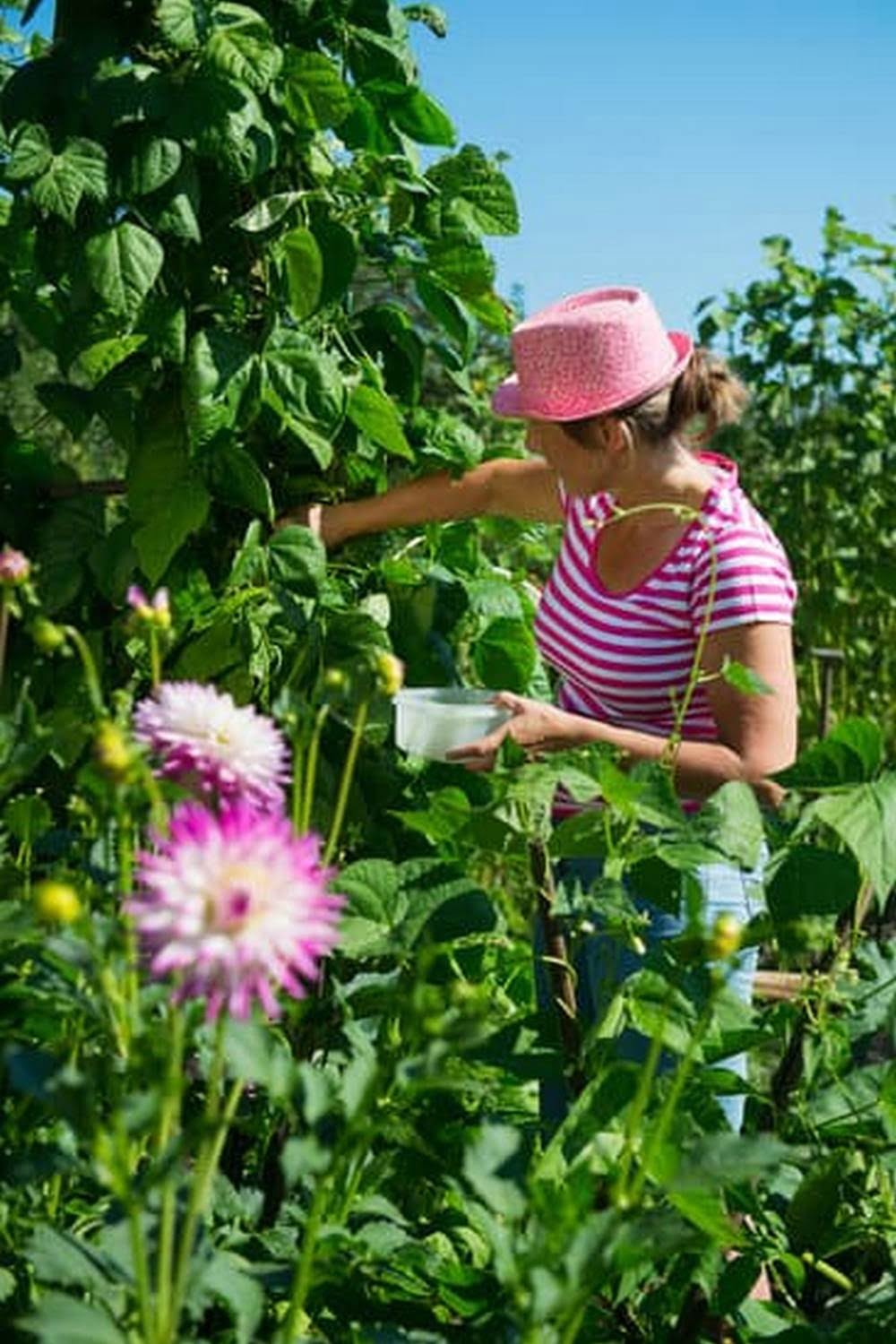Vegetable gardening in New Zealand offers a unique and rewarding experience due to the country’s diverse climate and landscape. With its moderate temperatures, ample rainfall, and fertile soil, New Zealand provides an ideal environment for growing a wide variety of vegetables.
This article will explore the specific factors that make vegetable gardening in New Zealand distinct, as well as provide valuable insights into the best vegetables to grow, tips for starting a vegetable garden, climate and soil considerations, pest and disease management, seasonal planting guide, sustainable gardening practices, and success stories from local gardeners.
New Zealand’s temperate climate and rich volcanic soils create favorable conditions for vegetable gardening. From the subtropical North Island to the cooler South Island, gardeners have the opportunity to cultivate an abundance of vegetables throughout the year. Understanding these regional nuances is essential for successful vegetable gardening in New Zealand.
In this article, we will delve into the best vegetables to grow in New Zealand’s climate and soil conditions. Additionally, practical advice and step-by-step instructions will be provided for those looking to start their own vegetable garden.
By addressing specific factors such as climate, soil considerations, pest and disease management, seasonal planting guides, sustainable practices, and real-life success stories from local gardeners, this article aims to equip readers with the knowledge needed to thrive in vegetable gardening in New Zealand.
Best Vegetables to Grow in New Zealand
New Zealand’s unique climate and soil conditions make it an ideal location for vegetable gardening. With a temperate climate, ample rainfall, and fertile soil, there are a wide variety of vegetables that thrive in this environment. Whether you are a seasoned gardener or just starting out, knowing which vegetables to grow is essential for success.
The Top Vegetables for New Zealand Gardens
One of the top vegetables to grow in New Zealand is the humble potato. Potatoes thrive in the cool climate and well-drained soil found in many parts of the country. Another popular choice is carrots, which do well in the loose, sandy soils commonly found in New Zealand. Additionally, leafy greens such as kale, spinach, and lettuce are excellent choices for New Zealand gardens due to their ability to handle cooler temperatures.
Unique Varieties
New Zealand’s climate allows for the cultivation of unique vegetable varieties that may not be as successful in other regions. For example, kumara, a type of sweet potato, has been grown in New Zealand for centuries and is particularly well-suited to the warm weather of the North Island. Additionally, heirloom tomato varieties such as Tamarillo and Oxheart thrive in New Zealand’s mild climate and produce exceptional fruit.
Tips for Success
When growing vegetables in New Zealand, it is important to pay attention to regional differences within the country. The South Island experiences colder winters and milder summers compared to the North Island, so gardeners should select vegetable varieties that are best suited to their specific region. Additionally, taking into account factors such as elevation and proximity to the coast can further inform which vegetables will thrive in a particular garden.
By selecting the right vegetables based on New Zealand’s unique conditions and paying attention to regional nuances, gardeners can set themselves up for a successful vegetable gardening experience.
Tips for Starting a Vegetable Garden in New Zealand
Starting a vegetable garden in New Zealand can be a rewarding and fulfilling experience, as the country’s climate and soil conditions are conducive to growing a wide variety of vegetables. To begin your vegetable gardening journey in New Zealand, there are several practical tips and step-by-step instructions that can help ensure success.
First and foremost, it is essential to assess the specific climate and soil conditions of your location in New Zealand. The country’s climate ranges from subtropical in the north to temperate in the south, which impacts the types of vegetables that will thrive in different regions. Additionally, understanding the soil composition, drainage, and pH levels of your garden site is crucial for selecting the right vegetables to grow.
When starting a vegetable garden in New Zealand, it’s important to choose the best location for optimal sunlight exposure and protection from strong winds. Most vegetables require full sun to thrive, so selecting a sunny spot with well-drained soil is key. Planning out your garden layout and deciding on raised beds or traditional rows can also help optimize space and accessibility for maintenance.
In addition to assessing climate, soil, and location factors, it’s important to select the right vegetables for your New Zealand garden. Some of the best vegetables to grow in New Zealand include tomatoes, potatoes, carrots, lettuce, peppers, beans, peas, and spinach. These varieties are well-suited to the country’s climate and can be successful crops for beginner gardeners. Proper spacing between plants based on their growth habits is also essential for healthy development and yield.
| Climate Zone | Best Vegetables |
|---|---|
| Subtropical (North) | Tomatoes |
| Temperate (South) | Carrots |
| All Regions | Potatoes |
Climate and Soil Considerations
New Zealand’s unique climate and diverse landscape make it an ideal location for vegetable gardening. The country experiences a maritime climate, with mild temperatures, high rainfall, and plenty of sunshine. This combination creates favorable conditions for growing a wide variety of vegetables throughout the year. In addition, New Zealand’s rich volcanic soil provides essential nutrients for the healthy growth of vegetable crops.
Impact of Climate on Vegetable Gardening
The temperate climate in New Zealand allows for year-round vegetable gardening, with different crops thriving in each season. The mild winters and warm summers provide an extended growing season, allowing gardeners to cultivate a wide range of vegetables from leafy greens to root crops and everything in between.
Soil Conditions in New Zealand
The fertile soil in New Zealand is well-suited for vegetable gardening, offering good drainage and aeration for plant roots. The country’s diverse topography results in different types of soil across various regions, including volcanic, alluvial, and loamy soils. Understanding the specific soil conditions in your area is essential for successful vegetable gardening in New Zealand.
Adapting to Unique Factors
While New Zealand’s climate and soil conditions are generally favorable for vegetable gardening, there are unique factors to consider. Coastal areas may experience salt spray and strong winds that can impact plant growth, while inland regions might face frost or drought challenges. Gardeners must adapt their gardening practices to address these specific factors for optimal results.
Overall, understanding the impact of climate and soil conditions on vegetable gardening is crucial for success in New Zealand. By leveraging the unique characteristics of the country’s environment and making adjustments as needed, gardeners can enjoy bountiful harvests of fresh, homegrown vegetables.
Pest and Disease Management
Vegetable gardening in New Zealand comes with its own set of challenges when it comes to managing pests and diseases. The temperate climate and unique landscape of New Zealand provide an ideal environment for a variety of insects and plant diseases that can affect vegetable gardens. However, with the right knowledge and proactive measures, gardeners can effectively address these issues and protect their crops.
One common pest that affects vegetable gardens in New Zealand is the white butterfly, which lays eggs on brassica plants such as cabbage and broccoli. The hatched larvae feed on the leaves, causing significant damage to the plants if left unchecked. To prevent infestations, gardeners can use floating row covers to protect their crops or introduce natural predators such as parasitic wasps that target white butterfly larvae.
In addition to pests, certain diseases can also pose a threat to vegetable gardens in New Zealand. For example, powdery mildew is a fungal disease that thrives in the cool, humid conditions often found in New Zealand. To prevent powdery mildew and other fungal diseases, gardeners can practice good ventilation by spacing out plants adequately and avoiding overhead watering. Applying organic fungicides or sulfur-based sprays can also help control fungal infections in vegetable gardens.
Overall, being aware of the common pests and diseases affecting vegetable gardening in New Zealand is essential for maintaining a healthy garden. By implementing preventive measures and using targeted treatments when necessary, gardeners can minimize the impact of these challenges and enjoy successful harvests year-round.
| Pest/Disease | Prevention/Treatment |
|---|---|
| White Butterfly Infestation | Use floating row covers or introduce natural predators like parasitic wasps. |
| Powdery Mildew | Practice good ventilation, avoid overhead watering, apply organic fungicides or sulfur-based sprays. |
Seasonal Planting Guide
New Zealand’s unique climate and diverse landscape offer both challenges and opportunities when it comes to vegetable gardening. To ensure a successful harvest, it’s crucial to understand the seasonal variations in weather and temperature, as well as the best times for planting and harvesting various vegetables. This comprehensive planting guide will provide valuable insights into the specific needs of vegetable gardening in New Zealand throughout the year.
In the spring, New Zealand gardeners can start preparing their vegetable gardens for the upcoming growing season. This is the ideal time to plant crops such as peas, spinach, lettuce, broccoli, and cabbage. With mild temperatures and ample rainfall, spring provides optimal conditions for these cool-season vegetables to thrive. Additionally, gardeners can begin sowing seeds for warm-season crops like tomatoes, peppers, and zucchinis indoors or in a greenhouse to get a head start on their growth.
As summer approaches, New Zealand experiences longer daylight hours and warmer temperatures, creating an ideal environment for a wide range of vegetables to flourish. During this time, it is recommended to plant heat-loving vegetables such as cucumbers, beans, corn, pumpkins, and eggplants. Adequate watering and protection from intense sunlight are crucial for maintaining healthy plants during the hotter months.
In autumn, gardeners can continue to enjoy an abundant harvest by planting root vegetables like carrots, potatoes, beets, and onions. These hardy crops can withstand cooler temperatures and enhance any fall menu with their rich flavors. It’s also essential to plan ahead for winter by preserving surplus produce through freezing or canning methods. Properly storing root vegetables is equally important to ensure a fresh supply throughout the colder months.
By following this seasonal planting guide tailored to New Zealand’s climate patterns and soil conditions, gardeners can maximize their success in growing a variety of vegetables year-round. Understanding the distinct rhythms of each season is key to achieving bountiful yields that reflect the natural beauty of this diverse country.
Sustainable Gardening Practices
When it comes to vegetable gardening in New Zealand, incorporating sustainable and eco-friendly practices is not only beneficial for the environment but also essential for long-term success. The unique climate and landscape of New Zealand present both opportunities and challenges for sustainable gardening, making it important to explore techniques that are particularly relevant to the region.
To achieve sustainable vegetable gardening in New Zealand, consider implementing the following eco-friendly practices:
1. Composting: Establishing a composting system is an effective way to reduce waste, improve soil fertility, and minimize the need for chemical fertilizers. By composting organic matter such as kitchen scraps and garden waste, you can create nutrient-rich soil amendments to enhance the health of your vegetable garden.
2. Water Conservation: Given New Zealand’s variable climate and occasional water restrictions, water conservation is a critical aspect of sustainable vegetable gardening. Utilize mulch to retain soil moisture, install drip irrigation systems for efficient water delivery, and collect rainwater for irrigation purposes.
3. Organic Pest Control: Instead of relying on chemical pesticides that can harm beneficial insects and other wildlife, opt for natural pest control methods such as introducing predator insects, using companion planting techniques, and creating physical barriers to protect your vegetables from pests.
By embracing these sustainable gardening practices and adapting them to the specific conditions of vegetable gardening in New Zealand, you can contribute to the preservation of the local ecosystem while enjoying abundant harvests of fresh produce. These eco-friendly approaches not only support the health of your garden but also contribute positively to the overall wellbeing of New Zealand’s natural environment.
Success Stories From New Zealand Gardeners
In conclusion, vegetable gardening in New Zealand offers a unique and rewarding experience for both seasoned gardeners and beginners alike. The diverse climate and soil conditions present both opportunities and challenges, but with the right knowledge and techniques, anyone can create a thriving vegetable garden in this beautiful country.
By exploring the best vegetables to grow, learning about climate and soil considerations, implementing pest and disease management strategies, following a seasonal planting guide, and embracing sustainable gardening practices, individuals can set themselves up for success in their vegetable gardening endeavors.
One of the most inspiring aspects of vegetable gardening in New Zealand is the sense of community and camaraderie among local gardeners. Success stories from New Zealand gardeners serve as valuable sources of knowledge and motivation for those looking to start or improve their own gardens. Hearing about the triumphs and struggles of fellow gardeners can provide reassurance and encouragement, reinforcing the idea that vegetable gardening is not just a solitary activity but a shared passion that brings people together.
As more individuals embrace vegetable gardening in New Zealand, it is clear that this practice is not just about growing fresh produce-it’s also about nurturing connections with nature, promoting sustainability, and fostering a sense of accomplishment. By tapping into the wealth of resources available on vegetable gardening in New Zealand-whether through online forums, local workshops, or simply talking to other gardeners-everyone can find support and inspiration to create their own thriving green space.
With dedication, patience, and perseverance, anyone can experience the joys of growing their own vegetables in the unique environment of New Zealand.
Frequently Asked Questions
What Vegetables Grow Best in New Zealand?
Some of the vegetables that grow best in New Zealand include tomatoes, potatoes, carrots, lettuce, and spinach. The climate and soil conditions in different regions of New Zealand make it suitable for a variety of vegetables to thrive.
Is Gardening Popular in New Zealand?
Gardening is quite popular in New Zealand, with many people enjoying growing their own fruits and vegetables at home. The country’s favorable climate and outdoor lifestyle contribute to the popularity of gardening as a hobby or a way to produce fresh produce.
How Do I Start a Vegetable Garden NZ?
To start a vegetable garden in New Zealand, it’s important to choose a suitable location with good sunlight and well-draining soil. Planning out the layout and choosing the right vegetables for the particular region’s climate are key steps.
It’s also essential to prepare the soil properly and ensure regular watering and maintenance for healthy plant growth. Additionally, learning about local pests and diseases can help manage potential garden challenges.

If you’re looking to get into vegetable gardening, or are just looking for some tips on how to make your current garden better, then you’ve come to the right place! My name is Ethel and I have been gardening for years. In this blog, I’m going to share with you some of my best tips on how to create a successful vegetable garden.





